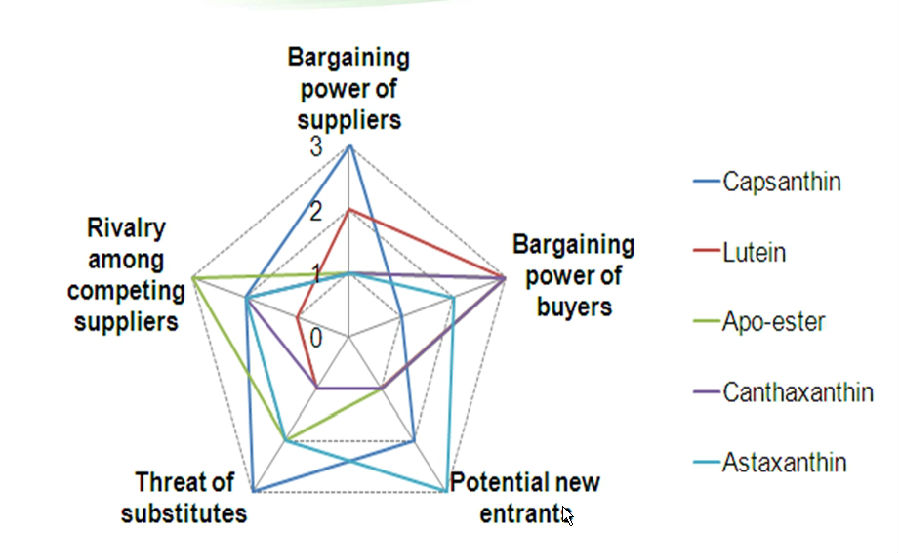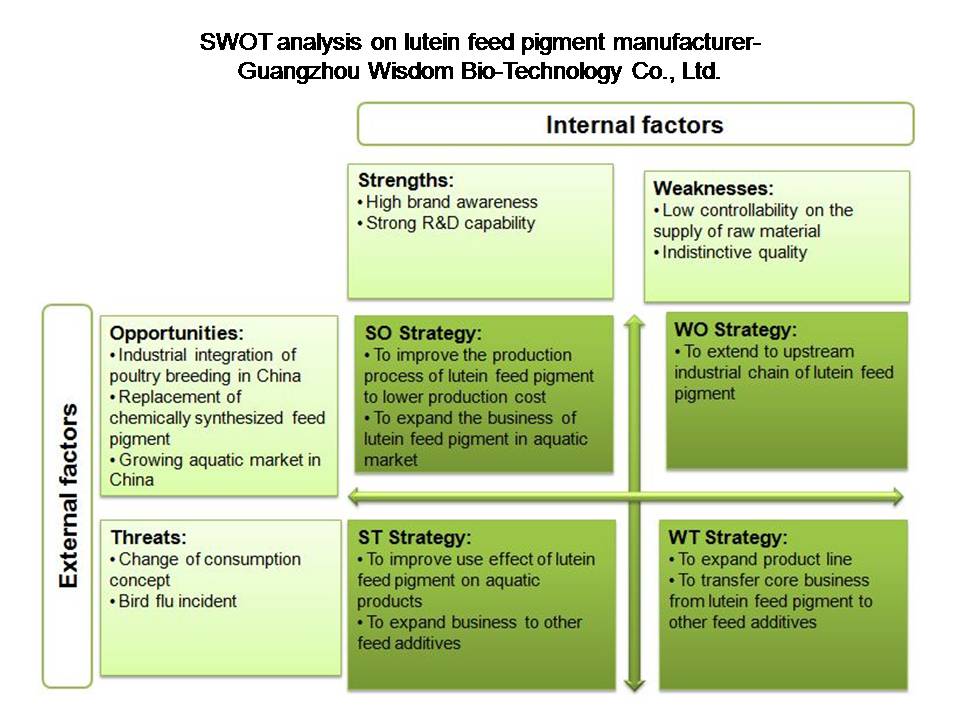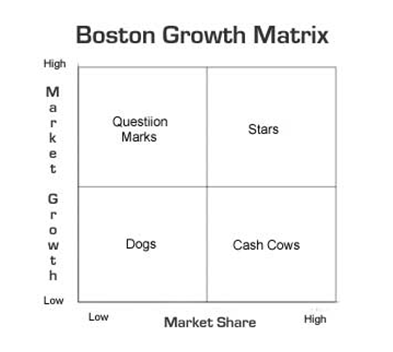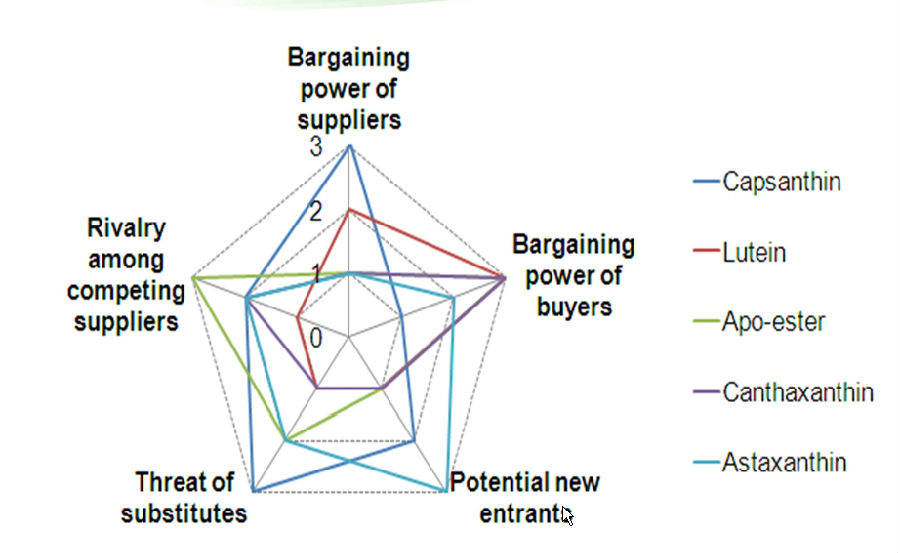Porter's Five Forces
This model identifies and analyzes five competitive forces that shape every industry, and helps determine an industry's weaknesses and strengths. The five forces in this model are:
1. Competition in the industry
2. Potential of new entrants into industry
3. Bargaining power of suppliers
4. Bargaining power of buyers
5. Threats of substitutes
Sample of CCM’s Porter’s Five Forces analysis on five feed pigment industries:

For detailed information about the analysis report, please refer to Survey of Feed Pigments in China
SWOT analysis
SWOT analysis is a structured planning method used to evaluate the Strengths, Weaknesses, Opportunities, and Threats involved in a project or in a business venture. A SWOT analysis can be carried out for a product, place, industry or person. It involves specifying the objective of the business venture or project and identifying the internal and external factors that are favorable and unfavorable to achieving that objective.

Click here for more information about the analysis.
BCG Matrix analysis
BCG Matrix, also known as Business Portfolio Matrix or Growth-Share Matrix, is a chart that was created by Bruce D. Henderson for the Boston Consulting Group in 1970 to help corporations to analyze their business units, that is, their product lines. This helps the company allocate resources and is used as an analytical tool in brand marketing, product management, strategic management, and portfolio analysis.

GE Matrix analysis
GE Matrix, also known as MM (McKinsey Matrix), is a strategic portfolio management tool created by consulting firm McKinsey at GE. It works predominantly at the level of corporate strategy. The GE Matrix places strategic business units on 2axes, namely market attractiveness and business unit strength.
CCM can use GE Matrix to evaluate current business or public institutions by analyzing market attraction and sales force, helping clients achieve the following objectives:
· To analyze their company’s current business portfolio and decide in which strategies they should place more or less investment;
· To develop growth strategies for adding new products and businesses to the portfolio;
· To decide which businesses or products should no longer be retained;
· Etc.
Specialized area
DuPont analysis is a typical method of measuring a company’s assets. With this method, assets are measured at their gross book value rather than at net book value in order to produce a higher return on equity (ROE).
DuPont analysis breaks ROE into three parts:
· Operating
efficiency, which is measured by profit margin
· Asset use efficiency, which is
measured by total asset turnover
· Financial leverage, which is
measured by the equity multiplier
